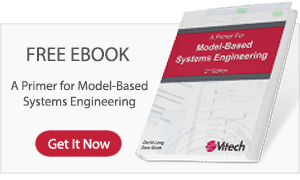States and Modes with Charles Wasson
Presenter: Charles Wasson

Vitech is pleased to welcome special guest Charles Wasson, author, instructor, and consultant, as he explores the finer aspect of States and Modes in Systems Engineering.
System Phases, Modes, and States are often one of the most controversial concepts in System Engineering due to a lack of definition and implementation standards. In fact, Modes & States are addressed AFTER the design is completed when User Manuals are being developed. The reality is: Modes & States serve as a key analytical framework early in System Development, especially in Conceptual Design.
Four issues contribute to the challenges of implementing System Phases, Modes, and States:
- Issue #1 – What is the difference between a “mode” and a “state.”
- Issue #2 – Do “modes” contain “states” or do “states” contain “modes”?
- Issue #3 – Should specifications specify “modes and states”?
- Issue #4 – Should specifications flow down “modes and states” as explicit requirements?
This webinar presents a Statement of the Problem, identifies sources of the problem, proposes clarifying definitions, and provides illustrative examples of “modes” and “states”. Building on the foundational definitions, the presentation explores the entity relationships (ERs) between System Phases, Modes, and States. Then, illustrates how Modes & States serve as linking mechanisms between System or Entity specification requirements and the conceptual design to Command & Control (C2) sets of a System Architecture’s capabilities to produce the specified performance-based outcomes.
Based on solutions to Issues #1 and #2 that fuel the controversy, this webinar addresses the final two issues – i.e., Issues #3 and #4 – concerning specifying and flowing down “modes and states” in specifications. We conclude with a summary of recommendations concerning the four issues and provide suggestions for effective SE leadership to properly apply and implement System Phases, Modes, and States.



